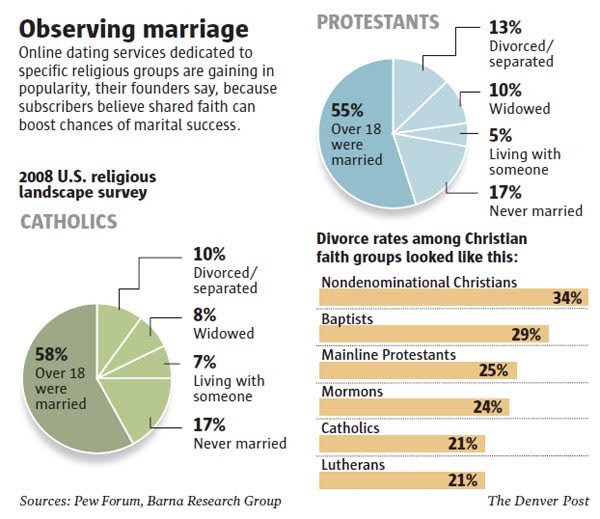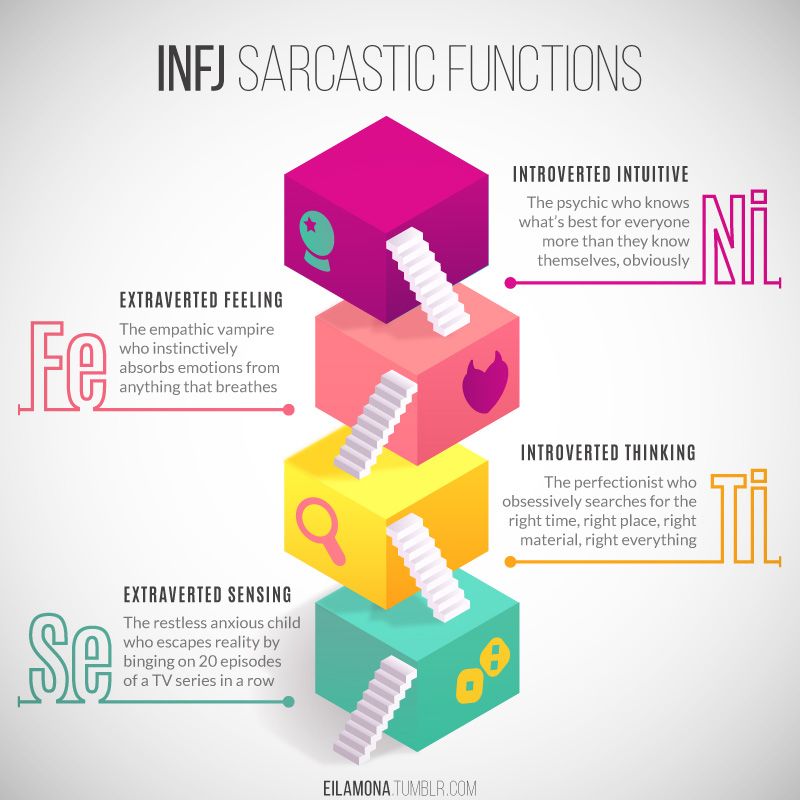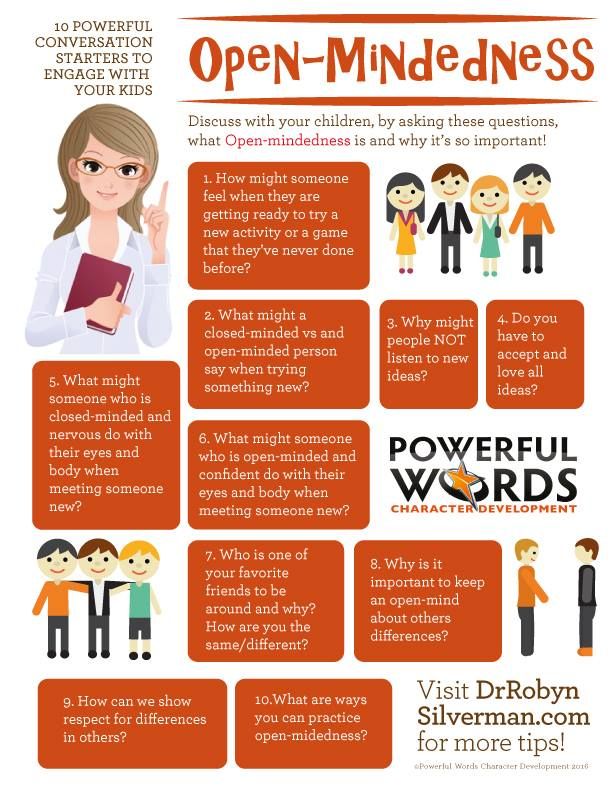Personality theories definition
6 Models That Aim to Explain Human Behavior
Personality theories are the result of hypotheses, experiments, case studies, and clinical research led by scientists in the psychology and human behavior field.
Personality is your unique set of behaviors, experiences, feelings, and thought patterns that make you you.
While it may change subtly over time, your personality remains fairly consistent throughout your life after a certain age.
Personality theories look to answer why specific features and traits develop in one person over another — or develop at all. The goal is to identify what makes everyone so similar and so different at the same time.
What personality isn’t
Personality isn’t your set of skills. It’s not your biological or physical differences. It’s not transient states, like hunger or sadness.
You may be a championship football player, for example, but that’s not a part of your personality. Your reliability, extroversion, and ambition, instead, may be personality traits that may incline you to perform well at team sports.
The field of personality theories continues to grow and change as more research opportunities arise and studies are completed.
As research has evolved, so have the theories themselves. Certain theories may have lost some validity, due to inconclusive research or new findings by experts.
1. Psychodynamic theories
Sigmund Freud laid the foundation for psychodynamic personality theories with his proposal of the id, the ego, and the superego. Freud saw these three parts of the mind as the basis of human personality.
According to Freud, these concepts could explain individual behavior.
The id was about your irrational and emotional impulses, while the ego weighed all the rational pros and cons. The superego then sought to apply social norms, rules, and other personal values that ultimately encouraged you to act based on your core beliefs.
Later, in the psychosexual personality development part of Freud’s theory, he explained how a person came to those beliefs and ideals.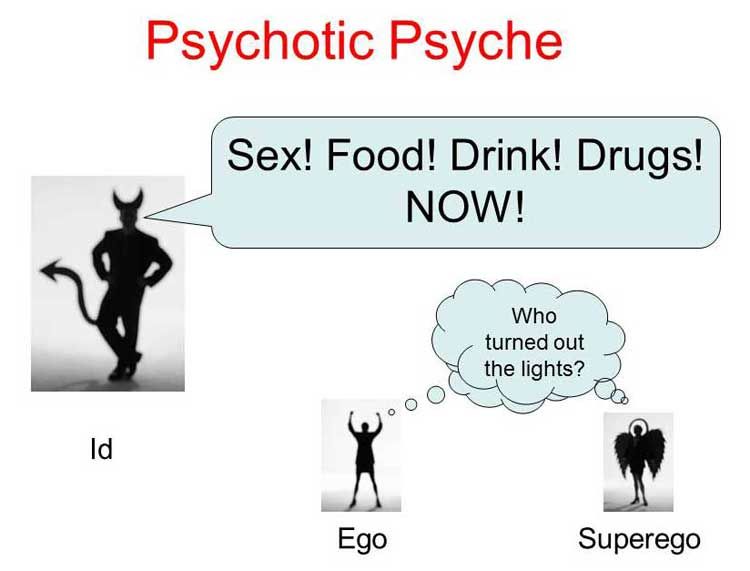
Freud thought early childhood experiences played the most important role in how personality developed. Early life, he said, was defined by five psychosexual stages based on the pleasure sensations in erogenous zones:
- oral: mouth and sucking reflexes
- anal: bladder and bowel control
- phallic: genitals and gender identification
- latency: sexuality is paused and latent, and gives room to social skills
- genital: mature sexuality and defined sexual interest and orientation
Freud suggested that each stage presented you with a developmental conflict. If you successfully overcame it, you would move into the next phase of development.
According to Freud’s personality theory, being unable to move past a phase resulted in certain psychological challenges, like the Oedipus complex, later in life.
Carl Jung and Erik Erikson are other names commonly associated with important work in the field of psychodynamic theory, although Erikson particularly marked a significant switch from Freud’s theories.
2. Trait theories
Trait theory is one of the most popular types of personality theories. It proposes that people’s personalities vary according to which basic personality traits are more dominant.
In this sense, each trait is seen as a continuum.
Take kindness, for example. Rather than viewing this as an optional personality trait — some people are kind while others are not — you can think of it as a sliding scale. Everyone falls somewhere on the kindness continuum. And you’re either more kind or less kind, compared with someone else.
One of the best-known trait theories is the five-factor theory, also known as the Big 5, proposed by Donald W. Fiske. This theory states that personality is made up of five distinct traits:
- agreeableness
- conscientiousness
- extraversion
- neuroticism
- openness to experience
Each trait has a range that goes from one extreme to another, and each person falls somewhere along that range.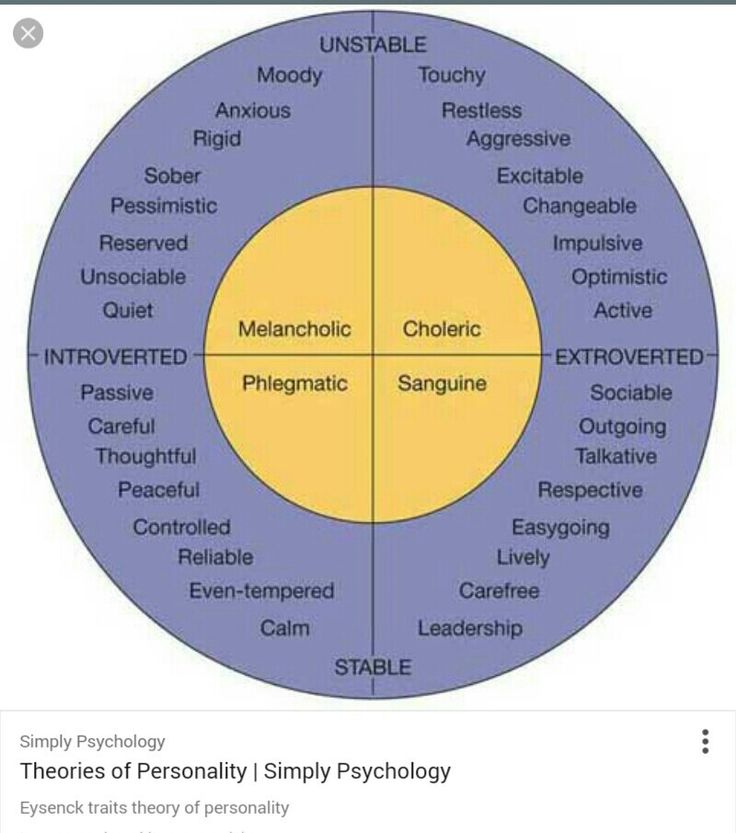
Other known trait theories include those developed by Gordon Allport, Raymond Cattell, and Hans Eysenck. Eysenck’s theory, for example, focused on just three trait continuums for everyone: extraversion, neuroticism, and psychoticism.
3. Humanistic theories
The humanistic approach to theories of personality involves understanding not only behavior and thought patterns, but also what someone believes gives their life meaning.
Humanistic theories propose that someone’s personality depends heavily on what they think of themselves — who they believe they are.
Abraham Maslow’s humanistic hierarchy of needs, for example, suggested that personality is the result of someone being able to meet — or not meet — basic needs like safety, self-esteem, and belongingness.
Carl Rogers explored the concept of self-actualization. This theory asserts that people are driven by their need for personal growth. The quest for learning and growing is what structures someone’s personality.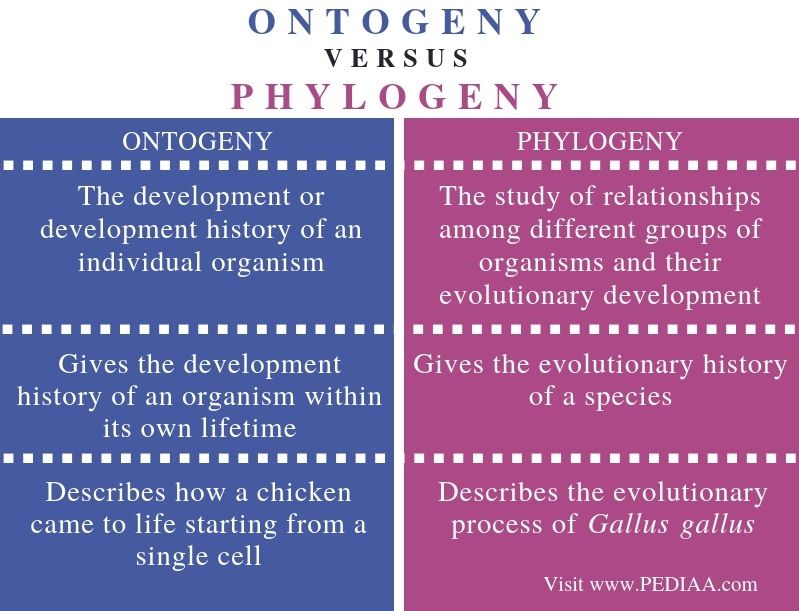
4. Social cognitive theories
Social cognitive theories of personality include several schools of thought like behaviorism, social learning theory, and expectancy-value theory.
Behaviorism
Behaviorism theory proposes that human behavior is the direct result of facing rewards and punishments.
In other words, you’re conditioned to respond a certain way because of a reward-punishment pattern in your life.
Example
If being generous in school gained you social admiration, later in life, you might continue to be generous because of that early positive reinforcement.
John B. Watson is often credited with pioneering the work in behavior theory, though William Carpenter, Alexander Bain, and Sigmund Freud also have ties to its early conceptualization, according to 2014 research.
Social learning theory
Closely related to behaviorism is Albert Bandura’s social learning theory, which takes behavioral models and adds the component of thought.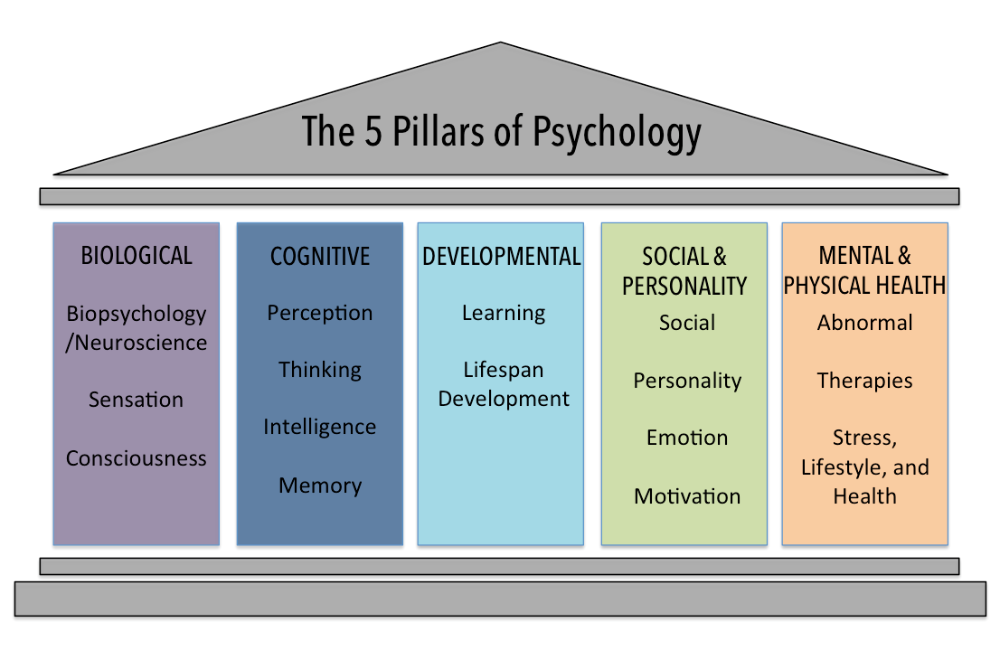 In other words, the theory proposes that your thought process plays an essential part in deciding if you should imitate or not a certain behavior (learning).
In other words, the theory proposes that your thought process plays an essential part in deciding if you should imitate or not a certain behavior (learning).
According to the social learning theory, how you perceive behavioral reinforcement is more important than the reinforcement itself.
Example
A child who loves candy might see it as a reward, whereas a child who doesn’t like candy would see it as a punishment.
Bandura also believed that environment influences a person’s personality and vice versa.
Being cooperative, for example, might gain you job opportunities. It might also increase the cooperativeness of those around you — creating an environment of cooperation.
Bandura changed the name of the model from social learning to social cognitive theory in 1986.
3. Expectancy-value theory
Another behaviorism-based model of human personality is Julian Rotter’s framework.
Rotter proposed human behavior is motivated by the expected rewards or punishment it can gain. This expectation comes from past experiences and whether or not you thought the consequences of your actions were under your control.
This expectation comes from past experiences and whether or not you thought the consequences of your actions were under your control.
When someone believes they have control over an outcome, they’re more motivated to action. This is particularly so when they anticipate a positive outcome because similar actions have been rewarded in the past.
Example
You’ve learned that studying at least 4 hours before a test leads to you passing said test.
The next time a test is scheduled, you’re more motivated to study for 4 hours to achieve a pass.
5. Biological theories
Biological personality theories assert that brain structures and neurophysiology are what determine your personality traits, according to 2016 research.
In other words, something as simple as higher neurotransmitter levels might provide you with a more positive outlook, for example, than someone else.
Hans J. Eysenck and Jeffrey A. Gray both included neuropsychology in their personality theories.
6. Evolutionary theories
Charles Darwin first introduced the concepts of evolution and natural selection in the mid-1800s. His work sparked an entire field of evolutionary biology.
Later, other scientists explored Darwin’s premises to explain human behavior. According to this framework of evolutionary theories, human personality is primarily the result of genes and most useful traits.
Ultimately, evolutionary theory states that personality characteristics that increased your ancestors’ chances for survival are the traits you may have at the core of your personality today.
Example
Your fear of snakes may feel instinctual, but evolutionary theory states it may result from your ancestors learning that snakes could be dangerous.
Personality is immeasurable. It’s different for everyone. This makes personality challenging to study. How do you control an environment and prove that personality develops in a specific way?
You can’t — at least not yet.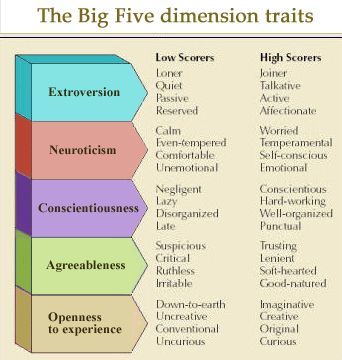
For this reason, personality development exists in theory only and is subject to controversy, though some research does support (or debunk) current theory models.
One of the biggest controversies in personality theory revolves around Sigmund Freud’s theories on personality and development. Even as far back as 1987, researchers wrote about how they are male-dominant, with references to females that may be interpreted as demeaning.
Theories of personality aim to provide a framework to explain the differences and similarities in human behavior and personality. They often overlap or complement each other, and sometimes they may be contradictory when compared.
Each personality theory offers a structure to analyze human personality, and most of them have extensive research backing up some of their premises. This is one of the reasons why the study of personality in psychology is still a developing field with no conclusive findings.
6 Models That Aim to Explain Human Behavior
Personality theories are the result of hypotheses, experiments, case studies, and clinical research led by scientists in the psychology and human behavior field.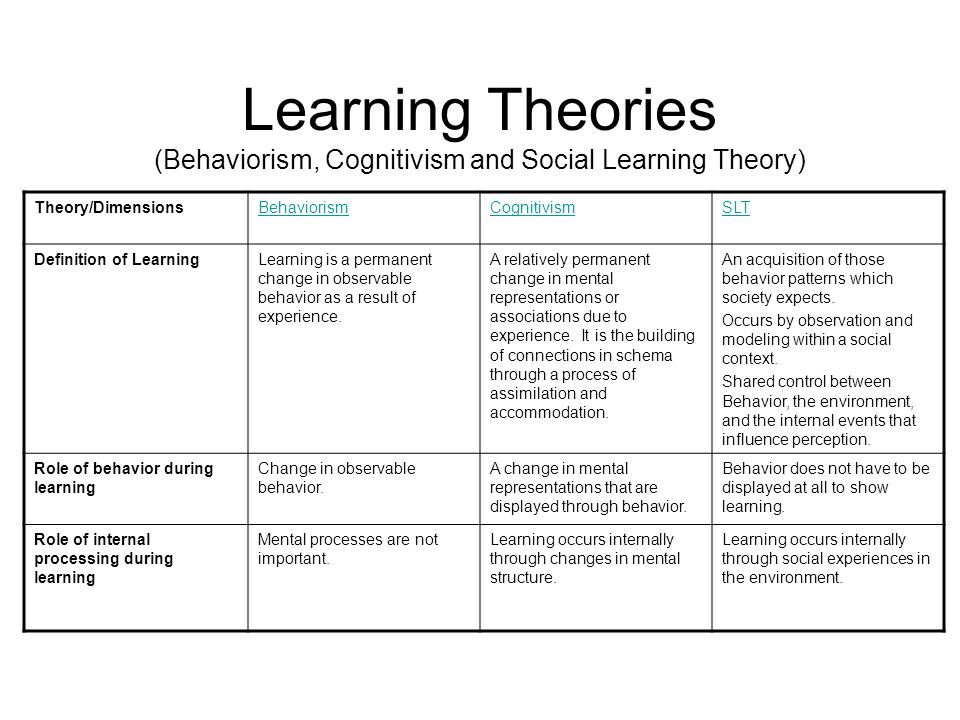
Personality is your unique set of behaviors, experiences, feelings, and thought patterns that make you you.
While it may change subtly over time, your personality remains fairly consistent throughout your life after a certain age.
Personality theories look to answer why specific features and traits develop in one person over another — or develop at all. The goal is to identify what makes everyone so similar and so different at the same time.
What personality isn’t
Personality isn’t your set of skills. It’s not your biological or physical differences. It’s not transient states, like hunger or sadness.
You may be a championship football player, for example, but that’s not a part of your personality. Your reliability, extroversion, and ambition, instead, may be personality traits that may incline you to perform well at team sports.
The field of personality theories continues to grow and change as more research opportunities arise and studies are completed.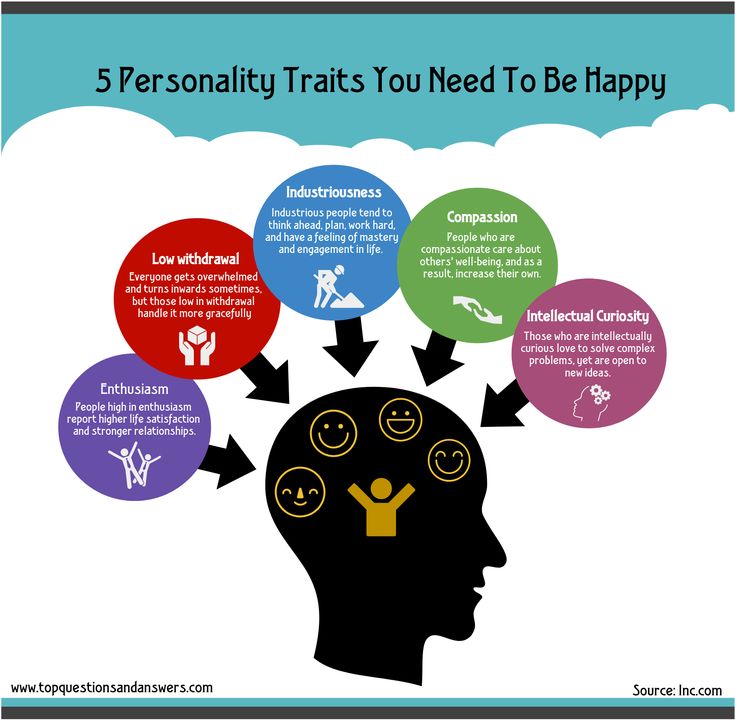
As research has evolved, so have the theories themselves. Certain theories may have lost some validity, due to inconclusive research or new findings by experts.
1. Psychodynamic theories
Sigmund Freud laid the foundation for psychodynamic personality theories with his proposal of the id, the ego, and the superego. Freud saw these three parts of the mind as the basis of human personality.
According to Freud, these concepts could explain individual behavior.
The id was about your irrational and emotional impulses, while the ego weighed all the rational pros and cons. The superego then sought to apply social norms, rules, and other personal values that ultimately encouraged you to act based on your core beliefs.
Later, in the psychosexual personality development part of Freud’s theory, he explained how a person came to those beliefs and ideals.
Freud thought early childhood experiences played the most important role in how personality developed. Early life, he said, was defined by five psychosexual stages based on the pleasure sensations in erogenous zones:
Early life, he said, was defined by five psychosexual stages based on the pleasure sensations in erogenous zones:
- oral: mouth and sucking reflexes
- anal: bladder and bowel control
- phallic: genitals and gender identification
- latency: sexuality is paused and latent, and gives room to social skills
- genital: mature sexuality and defined sexual interest and orientation
Freud suggested that each stage presented you with a developmental conflict. If you successfully overcame it, you would move into the next phase of development.
According to Freud’s personality theory, being unable to move past a phase resulted in certain psychological challenges, like the Oedipus complex, later in life.
Carl Jung and Erik Erikson are other names commonly associated with important work in the field of psychodynamic theory, although Erikson particularly marked a significant switch from Freud’s theories.
2. Trait theories
Trait theory is one of the most popular types of personality theories.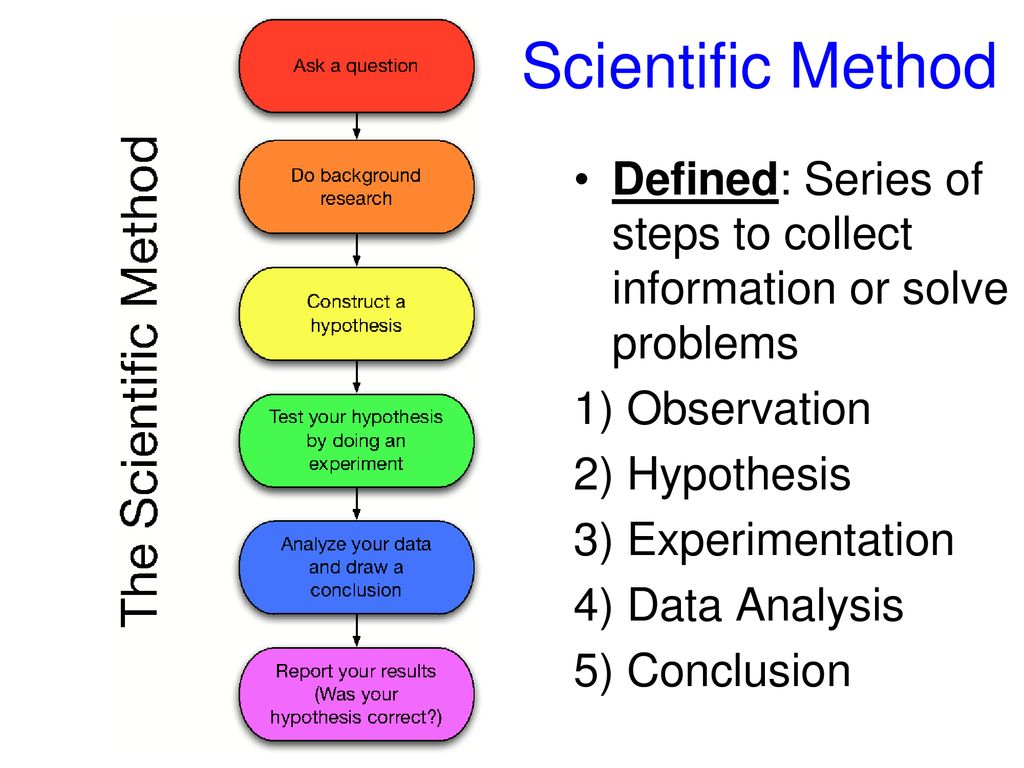 It proposes that people’s personalities vary according to which basic personality traits are more dominant.
It proposes that people’s personalities vary according to which basic personality traits are more dominant.
In this sense, each trait is seen as a continuum.
Take kindness, for example. Rather than viewing this as an optional personality trait — some people are kind while others are not — you can think of it as a sliding scale. Everyone falls somewhere on the kindness continuum. And you’re either more kind or less kind, compared with someone else.
One of the best-known trait theories is the five-factor theory, also known as the Big 5, proposed by Donald W. Fiske. This theory states that personality is made up of five distinct traits:
- agreeableness
- conscientiousness
- extraversion
- neuroticism
- openness to experience
Each trait has a range that goes from one extreme to another, and each person falls somewhere along that range.
Other known trait theories include those developed by Gordon Allport, Raymond Cattell, and Hans Eysenck. Eysenck’s theory, for example, focused on just three trait continuums for everyone: extraversion, neuroticism, and psychoticism.
Eysenck’s theory, for example, focused on just three trait continuums for everyone: extraversion, neuroticism, and psychoticism.
3. Humanistic theories
The humanistic approach to theories of personality involves understanding not only behavior and thought patterns, but also what someone believes gives their life meaning.
Humanistic theories propose that someone’s personality depends heavily on what they think of themselves — who they believe they are.
Abraham Maslow’s humanistic hierarchy of needs, for example, suggested that personality is the result of someone being able to meet — or not meet — basic needs like safety, self-esteem, and belongingness.
Carl Rogers explored the concept of self-actualization. This theory asserts that people are driven by their need for personal growth. The quest for learning and growing is what structures someone’s personality.
4. Social cognitive theories
Social cognitive theories of personality include several schools of thought like behaviorism, social learning theory, and expectancy-value theory.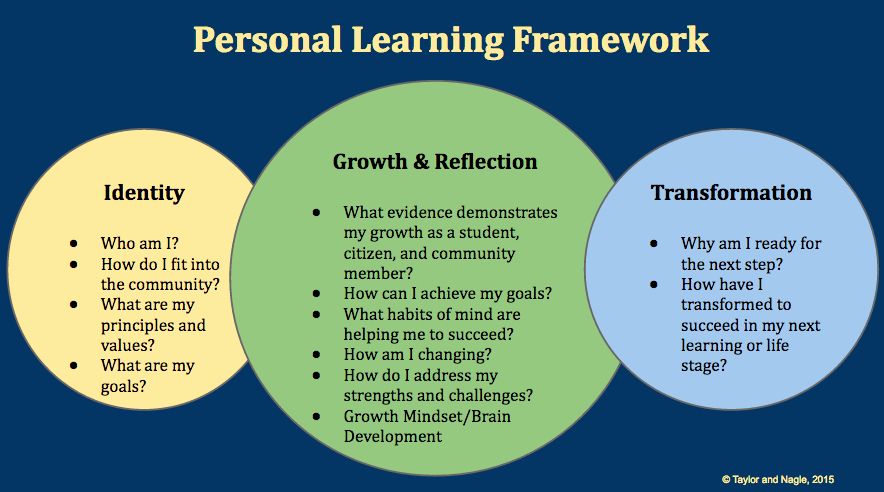
Behaviorism
Behaviorism theory proposes that human behavior is the direct result of facing rewards and punishments.
In other words, you’re conditioned to respond a certain way because of a reward-punishment pattern in your life.
Example
If being generous in school gained you social admiration, later in life, you might continue to be generous because of that early positive reinforcement.
John B. Watson is often credited with pioneering the work in behavior theory, though William Carpenter, Alexander Bain, and Sigmund Freud also have ties to its early conceptualization, according to 2014 research.
Social learning theory
Closely related to behaviorism is Albert Bandura’s social learning theory, which takes behavioral models and adds the component of thought. In other words, the theory proposes that your thought process plays an essential part in deciding if you should imitate or not a certain behavior (learning).
According to the social learning theory, how you perceive behavioral reinforcement is more important than the reinforcement itself.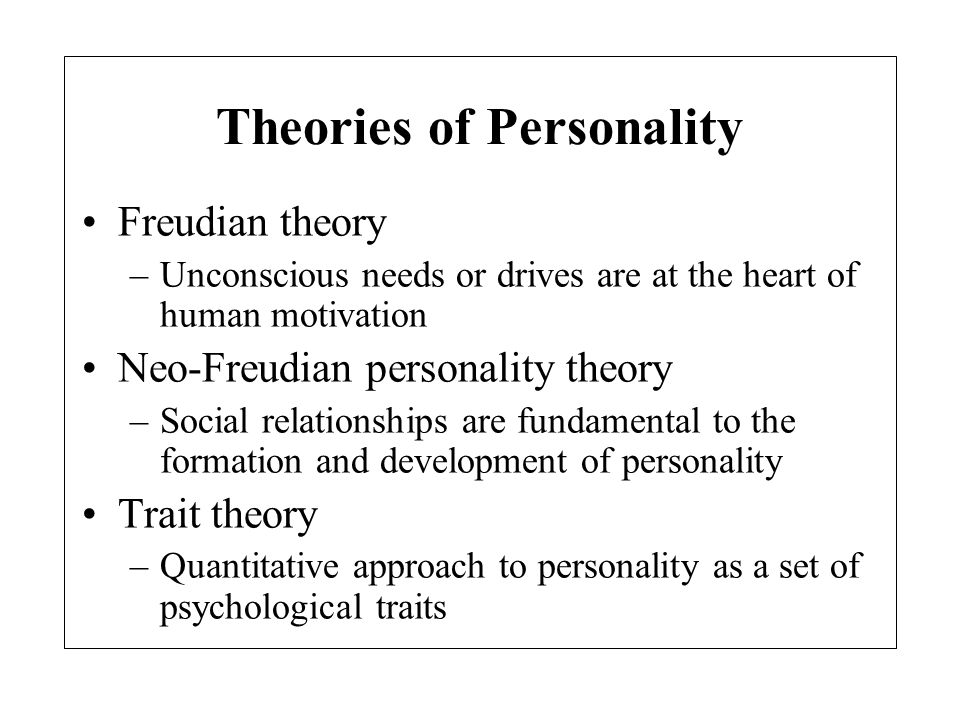
Example
A child who loves candy might see it as a reward, whereas a child who doesn’t like candy would see it as a punishment.
Bandura also believed that environment influences a person’s personality and vice versa.
Being cooperative, for example, might gain you job opportunities. It might also increase the cooperativeness of those around you — creating an environment of cooperation.
Bandura changed the name of the model from social learning to social cognitive theory in 1986.
3. Expectancy-value theory
Another behaviorism-based model of human personality is Julian Rotter’s framework.
Rotter proposed human behavior is motivated by the expected rewards or punishment it can gain. This expectation comes from past experiences and whether or not you thought the consequences of your actions were under your control.
When someone believes they have control over an outcome, they’re more motivated to action. This is particularly so when they anticipate a positive outcome because similar actions have been rewarded in the past.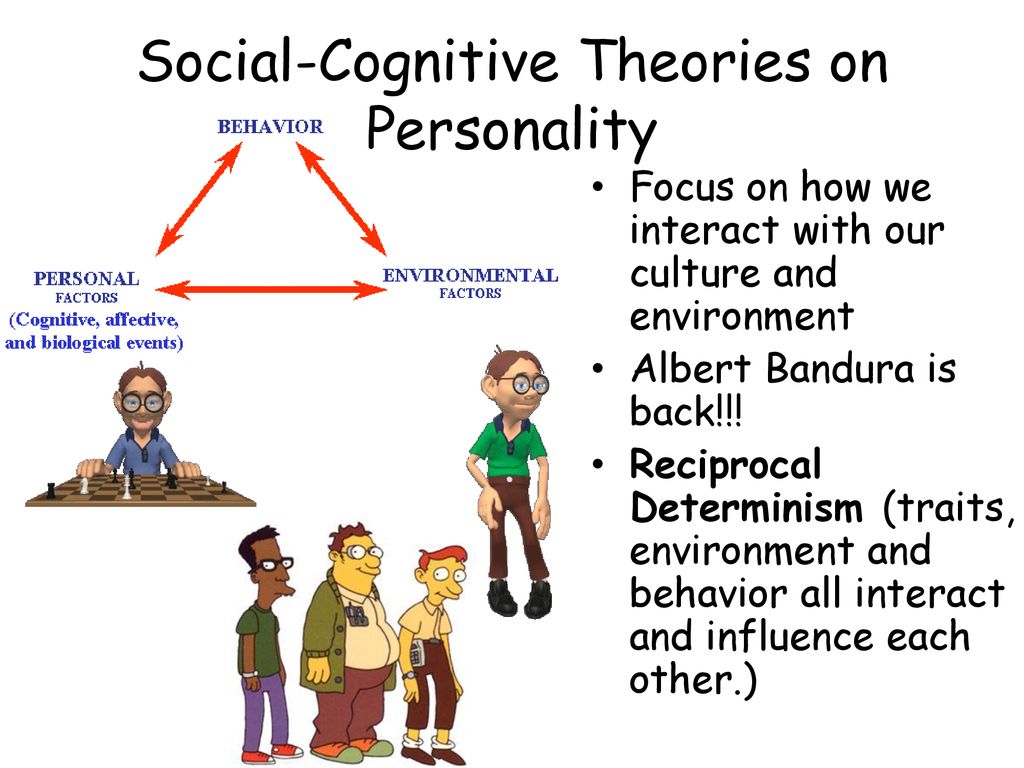
Example
You’ve learned that studying at least 4 hours before a test leads to you passing said test.
The next time a test is scheduled, you’re more motivated to study for 4 hours to achieve a pass.
5. Biological theories
Biological personality theories assert that brain structures and neurophysiology are what determine your personality traits, according to 2016 research.
In other words, something as simple as higher neurotransmitter levels might provide you with a more positive outlook, for example, than someone else.
Hans J. Eysenck and Jeffrey A. Gray both included neuropsychology in their personality theories.
6. Evolutionary theories
Charles Darwin first introduced the concepts of evolution and natural selection in the mid-1800s. His work sparked an entire field of evolutionary biology.
Later, other scientists explored Darwin’s premises to explain human behavior. According to this framework of evolutionary theories, human personality is primarily the result of genes and most useful traits.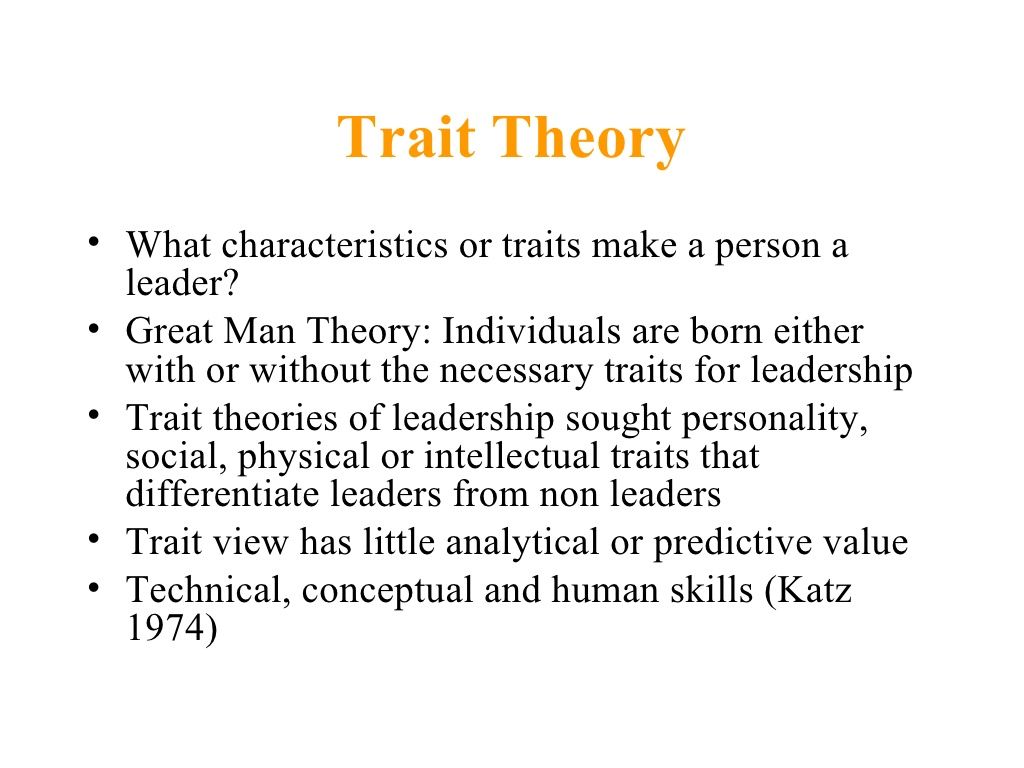
Ultimately, evolutionary theory states that personality characteristics that increased your ancestors’ chances for survival are the traits you may have at the core of your personality today.
Example
Your fear of snakes may feel instinctual, but evolutionary theory states it may result from your ancestors learning that snakes could be dangerous.
Personality is immeasurable. It’s different for everyone. This makes personality challenging to study. How do you control an environment and prove that personality develops in a specific way?
You can’t — at least not yet.
For this reason, personality development exists in theory only and is subject to controversy, though some research does support (or debunk) current theory models.
One of the biggest controversies in personality theory revolves around Sigmund Freud’s theories on personality and development. Even as far back as 1987, researchers wrote about how they are male-dominant, with references to females that may be interpreted as demeaning.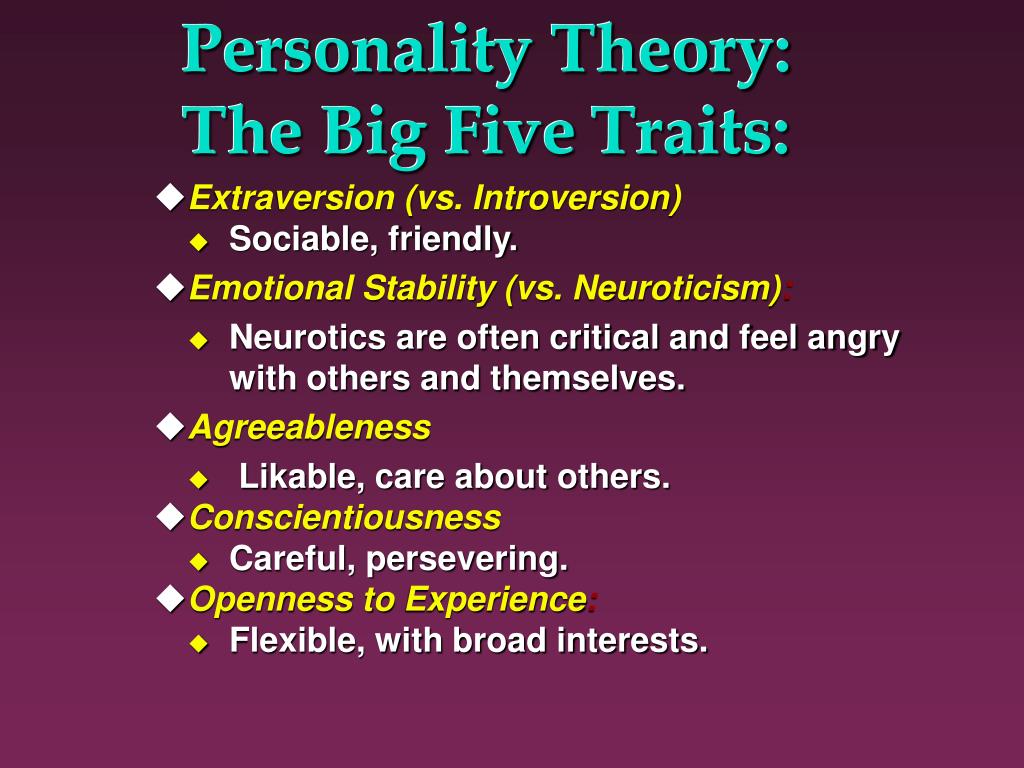
Theories of personality aim to provide a framework to explain the differences and similarities in human behavior and personality. They often overlap or complement each other, and sometimes they may be contradictory when compared.
Each personality theory offers a structure to analyze human personality, and most of them have extensive research backing up some of their premises. This is one of the reasons why the study of personality in psychology is still a developing field with no conclusive findings.
Personality theories
Mankind, from the moment the planet was settled, was interested in many things, but only in the 30s of the XX century, a person became interested in the origin of his personal nature. From this period begins the study of personality theory.
The concept of personality theory is a set of assumptions or hypotheses about the mechanisms and nature of personality development. They consider their main goal not only to explain, but also to predict human behavior.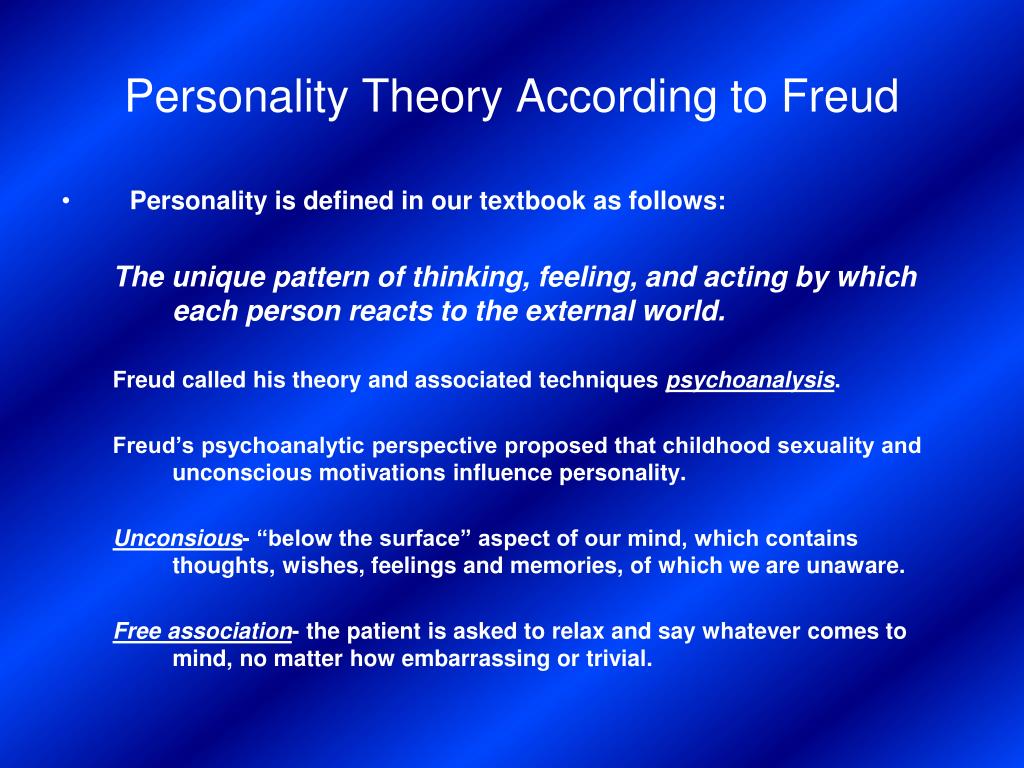
The psychology of personality theory enables a person to understand his nature, helps to find answers to rhetorical questions that he asks himself all the time. Psychological theories of personality according to their development are divided into three periods:
- The initial formation of psychoanalysis.
- Clearer definition of analysis.
- Modern psychology.
There are about 40 personality theories, if considered from a theoretical point of view. Let's name the main theories of personality:
- Analytical theory of personality. It is close to the theory of classical psychoanalysis, because it has many common roots with it. A prominent representative of this theory is the Swiss researcher Carl Jung. According to this approach, personality is a community of realized and innate archetypes. The structure of a personality is an individual originality of the relations between individual blocks of the conscious and the unconscious, introverted and extroverted personal attitudes.
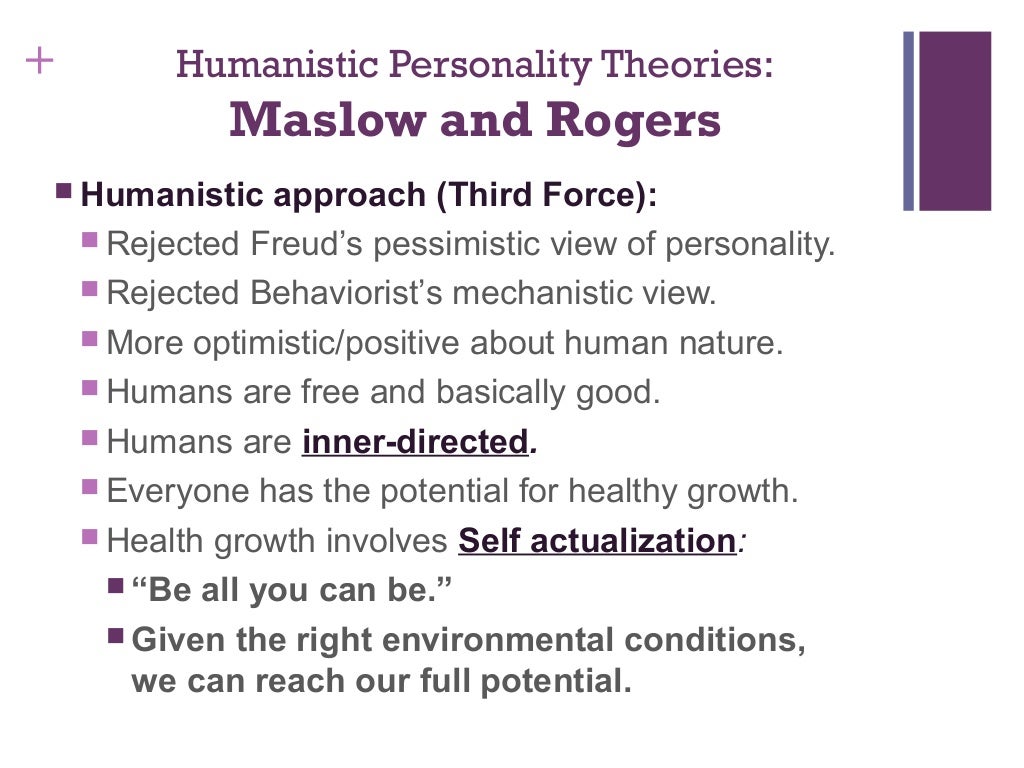 nine0010
nine0010 - Psychodynamic theory of personality. This theory is also known as "classical psychoanalysis". Its representative and founder is Sigmund Freud. Within the framework of this theory, personality is a combination of aggressive and sexual motives, defense mechanisms. In turn, the personality structure is a different ratio of individual individual properties and defense mechanisms.
- Humanistic theory of personality. Representative - Abraham Maslow. Its supporters consider the personality to be nothing more than the inner world of the "I" of a person. And the structure is the ratio of the ideal and real "I". nine0010
- Cognitive theory of personality. By its nature, it is close to humanistic. Founder - George Kelly. He believed that the only thing a person wants to know is what happened to him and will happen in the future. Personality is a system of personal constructs that are used to process a person's personal experience.
- Activity theory of personality.
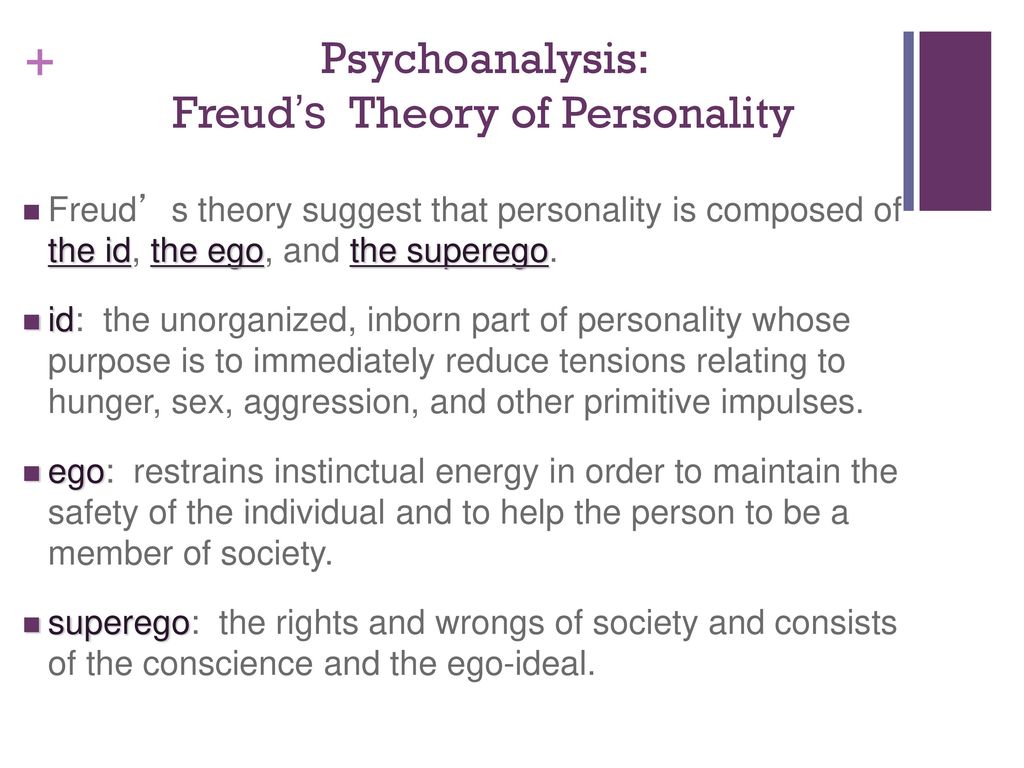 This direction has received the greatest distribution as domestic theories of personality. A prominent representative is Sergei Rubinshtein. A person is a conscious subject who occupies a certain position in society and, in turn, performs a social role that is useful for society. The structure of the personality is a hierarchy of individual blocks (self-control, orientation) and systemic properties of each personality. nine0010
This direction has received the greatest distribution as domestic theories of personality. A prominent representative is Sergei Rubinshtein. A person is a conscious subject who occupies a certain position in society and, in turn, performs a social role that is useful for society. The structure of the personality is a hierarchy of individual blocks (self-control, orientation) and systemic properties of each personality. nine0010 - Behavioral theory of personality. It also has the name "scientific". The main thesis of this trend is that personality is a product of learning. That is, a personality is a combination of a system of social skills and internal factors. Structure is a hierarchy of social skills in which internal blocks of subjective significance play the main role.
- Dispositional theory of personality. From the point of view of this theory, personality is a system of temperament and socially determined properties. Structure - a hierarchy of biological properties that are included in specific relationships and form certain traits and types of temperaments.
 nine0010
nine0010 - Modern theories of personality. These include: sociodynamic (the theory of personality behavior, in which the dominant behavior is characteristic of the external situation), internationalist (the interaction of internal and external factors) and trait theory (the theory of personality types, which is based on the difference in individual traits of different people or personal integrity ).
Today it is difficult to say unequivocally which theory is the most truthful. Each has its own advantages and disadvantages. Relevant at present is the concept of the modern Italian psychologist Antonio Meneghetti, who drew conclusions about the theory of personality based on previously stated knowledge on this topic. nine0003
Related articles:
| Associative memory How do you feel when you hear an old familiar tune, or imagine a place you've been to? In most cases, memory draws some kind of images and pictures. | Irresponsibility When a person is born, he turns from an unintelligent baby into a mature person capable of various kinds of actions. That's just doing them, not everyone is ready to be responsible for the consequences. What is responsibility and how to bring it up in yourself - we will talk about this later. |
| Unconscious in psychology Man must be the master of his life. It seems to be a true statement, in practice our very essence does not always make it possible to determine where we think ourselves, and where the subconscious plays with us. About what the unconscious is and what it hides in itself - read on. nine0003 | Treachery Every day we are surrounded by a mass of people with different qualities of character. |
Personality in the main psychological theories
Personality is one of the central concepts in psychology, and each psychological approach or direction has its own, different theory of personality. In the theory of W. James, personality is described through a triad of physical, social and spiritual personality, in behaviorism (J. Watson) it is a set of behavioral reactions inherent in a given person, in psychoanalysis (Z. Freud) - the eternal struggle between the Id and the Superego, in activity approach (A.N. Leontiev) is a hierarchy of motives, in the synton approach (N.I. Kozlov) a person is a responsible subject of will and at the same time a project that can be implemented or not by each person. nine0003
nine0003
Personality according to W. James
According to W. James, the constituent elements of personality can be divided into three classes: physical personality, social personality and spiritual personality. See →
Personality in behaviorism
“Let us mean by the term “personality” everything that an individual has (actually or potentially), and his possibilities (actual or potential) in relation to reactions” (JB Watson).
Personality in psychoanalysis
According to Z. Freud, the personality is an ensemble of irrational unconscious drives, and the content of the inner life of the individual and its dynamics is an eternal struggle between the Id (unconscious drives) and the Super-I (represented in the mind by the demands of society). nine0003
The dominant life of a person is the desire to maximize the satisfaction of innate drives and at the same time minimize the punishment (external and internal) for this satisfaction. A person throughout his life is trying to resolve the conflict given to him by his own nature and return to a state of balance. The conflict is inevitable not only in connection with the initial “corruption” of a person, but also because in the absence of conflict, the source of personality dynamics disappears.
The conflict is inevitable not only in connection with the initial “corruption” of a person, but also because in the absence of conflict, the source of personality dynamics disappears.
There can be no question of any personal growth in psychoanalysis: in the vision of Z. Freud, a person does not strive for development, its task is to minimize internal conflict. nine0003
Personality in a cognitive approach
Consent-oriented homeostatic theory.
The principle of homeostasis, underlying the theory, does not allow the freedom of the individual.
Personality - a system that models the outside world in order to adapt to it.
The main task of a person is to achieve balance with the environment, and initially the nature of a person is neutral (a person is neither bad nor good). The best thing for a person is to know the world, to master the social experience of mankind and to exist in accordance with it. nine0003
Personality in an activity approach
The natural essence of a personality is a constant desire to develop and change (“go beyond oneself”).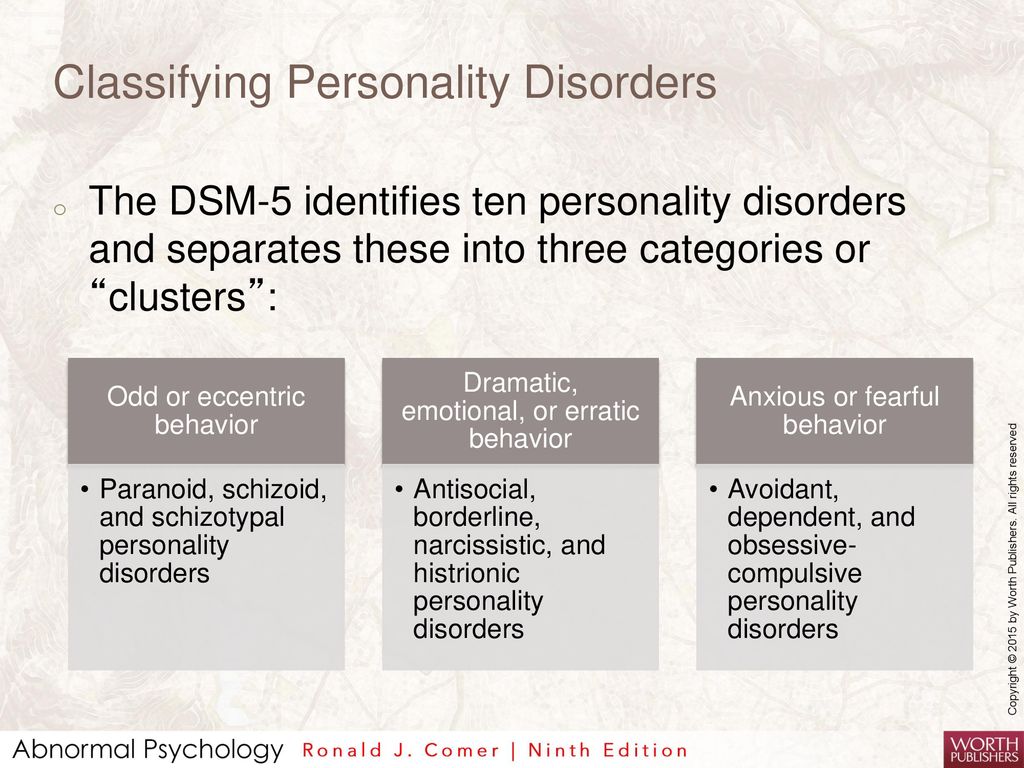 The process of complication and improvement of the personality in the course of its formation is denoted by the term "personal growth". Crisis situations and conflicts serve as additional development mechanisms. Personality is a constantly unfinished project. This project is not set initially, but is formed in various activities of the individual. Responsibility for the development project and the outcome of its implementation rests solely with the individual himself. See → nine0003
The process of complication and improvement of the personality in the course of its formation is denoted by the term "personal growth". Crisis situations and conflicts serve as additional development mechanisms. Personality is a constantly unfinished project. This project is not set initially, but is formed in various activities of the individual. Responsibility for the development project and the outcome of its implementation rests solely with the individual himself. See → nine0003
Personality in humanistic psychology
Consent-oriented heterostatic theory.
An optimistic view of the nature of man and his life path: man is good by nature, but society distorts his positive essence. The conflict between the "good" person and the "bad" society is inevitable. The natural essence of a person is “disinterested” (non-adaptive) activity and a constant desire to develop and change (“go beyond oneself”). The ideal to which a person aspires is some natural universal project, set initially (models of self-realization).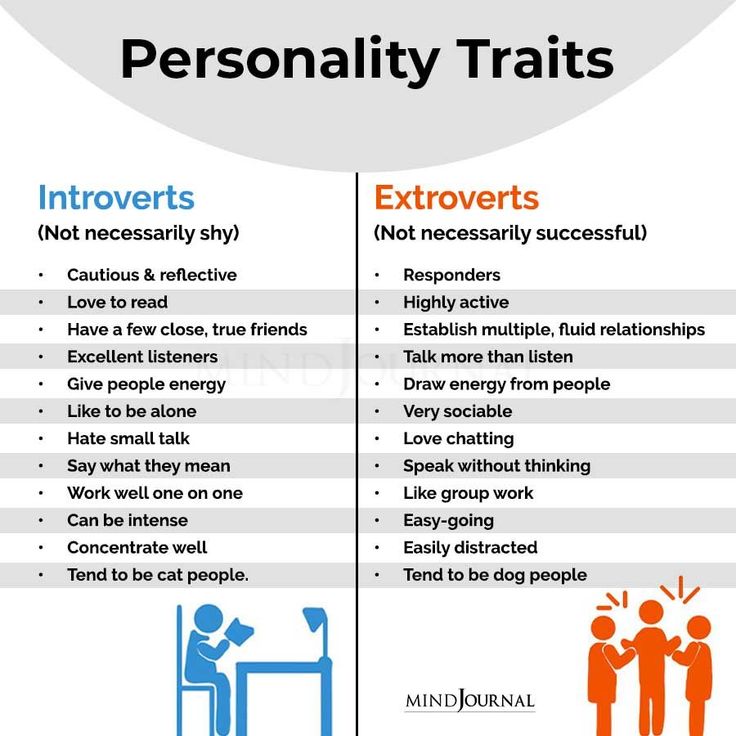
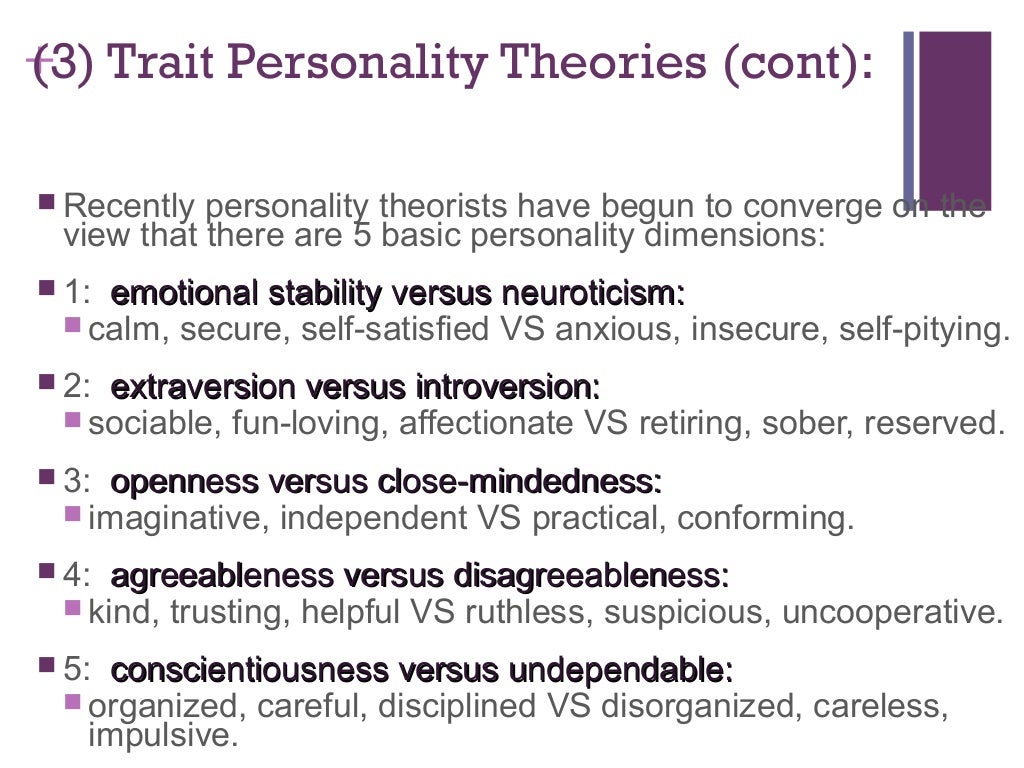 They are called associations, and the type of memory itself is associative. What are these memories and is it possible to develop this type of memory? Read on for details. nine0003
They are called associations, and the type of memory itself is associative. What are these memories and is it possible to develop this type of memory? Read on for details. nine0003  We allow a small part of them very close and trust the most intimate. But none of us can be sure that tomorrow a loved one will not undermine our faith in him. Where does perfidy come from and what does it consist of? We read and take note.
We allow a small part of them very close and trust the most intimate. But none of us can be sure that tomorrow a loved one will not undermine our faith in him. Where does perfidy come from and what does it consist of? We read and take note. 



